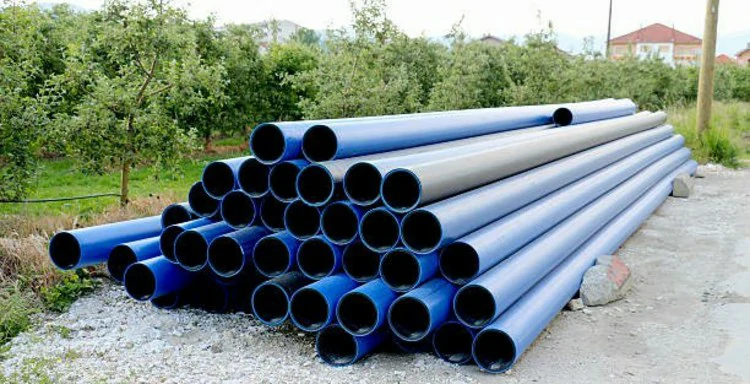Water infrastructure projects demand durable and reliable piping solutions, and High-Density Polyethylene (HDPE) pipes have emerged as a superior choice for various applications. In this article, we explore the key advantages of using HDPE pipes in water infrastructure projects, highlighting their unique features that contribute to the success and longevity of such ventures.
1. Unparalleled Durability: The HDPE Advantage
1.1 Resilience in Challenging Environments
HDPE pipes are renowned for their exceptional durability, making them ideal for water infrastructure projects in diverse environments. Whether subjected to harsh weather conditions, soil movements, or chemical exposures, HDPE pipes demonstrate remarkable resilience. Their resistance to corrosion and abrasion ensures a prolonged service life, reducing the need for frequent replacements and maintenance.
1.2 Leak-Free Joints and Connections
The fusion-welded joints of HDPE pipes provide a seamless and leak-free pipeline network. Unlike traditional materials with vulnerable joints, HDPE’s fused connections eliminate the risk of leakage, safeguarding the integrity of water supply systems. This feature is particularly crucial in water infrastructure projects where reliability and water conservation are paramount.
1.3 Longevity for Sustainable Solutions
HDPE pipes contribute to the sustainability of water infrastructure projects through their extended lifespan. The robust nature of HDPE enables these pipes to withstand the test of time, reducing the environmental impact associated with frequent replacements. Their longevity aligns with the principles of sustainable development, offering a reliable and eco-friendly solution for water conveyance.
2. Versatility in Applications: Meeting Project Requirements
2.1 Flexibility for Complex Designs
HDPE pipes’ flexibility is a game-changer in water infrastructure projects that involve complex layouts and designs. The pipes can be easily bent to accommodate changing terrain or circumvent obstacles without compromising structural integrity. This flexibility simplifies the installation process, making HDPE pipes suitable for projects with varying landscape challenges.
2.2 Resistance to Chemicals and Corrosion
Water infrastructure projects often involve the transport of chemically treated water or wastewater. HDPE pipes’ resistance to a wide range of chemicals and corrosive substances ensures the integrity of the piping system. This resistance minimizes the risk of pipe degradation, maintaining water quality and preventing contamination in diverse project scenarios.
2.3 Lighter Weight for Cost-Efficient Transport
The lightweight nature of HDPE pipes facilitates cost-efficient transportation and installation. Compared to traditional materials, the reduced weight of HDPE pipes simplifies logistics and handling, resulting in lower transportation costs and streamlined on-site deployment. This characteristic makes HDPE pipes an economically sound choice for water infrastructure projects.
3. Cost-Efficiency and Economic Benefits: The HDPE Impact
3.1 Reduced Installation Costs
The ease of installation and lightweight nature of HDPE pipe contribute to significant cost savings in water infrastructure projects. The fusion welding process simplifies and accelerates installation, reducing labor costs and project timelines. Additionally, the lower weight of HDPE pipe translates into cost-effective transportation and handling.
3.2 Minimal Maintenance Requirements
HDPE pipe’ resistance to corrosion, abrasion, and chemical degradation minimizes maintenance requirements. The durability and leak-free joints contribute to a reduction in maintenance-related costs over the lifespan of water infrastructure projects. This financial advantage positions HDPE pipes as an economically viable option for long-term water conveyance solutions.
3.3 Long-Term Economic Impact
Choosing HDPE pipes for water infrastructure projects goes beyond initial cost savings. The long lifespan, minimal maintenance needs, and sustainable characteristics of HDPE contribute to a positive long-term economic impact. The investment in HDPE translates into a reliable and efficient water conveyance system that stands the test of time, ensuring a lasting return on investment.
Conclusion:
In conclusion, the advantages of HDPE pipe in water infrastructure projects are multifaceted. From unparalleled durability and versatility in applications to cost-efficiency and economic benefits, HDPE pipe have redefined the standards for water conveyance systems. Embracing the unique features of HDPE contributes not only to the success of individual projects but also to the sustainable and resilient future of water infrastructure on a global scale.
Contact
IFANPLUS is a professional manufacturer of plastic pipes, fittings, and various types of valves in China. If you are interested in our PPR valves, pipes, and fittings, feel free to contact our experts. Explore our diverse range of drainage valve products, including PPR and PVC pipes in German and American standards, as well as various types of valves. We offer a variety of standard pipes to meet your specific requirements. Click here to learn more about our products.
We will reply your email or fax within 24 hours.
You can call us at any time if there is any question on our production.
For more information,pls visit our webside https://www.ifanplus.com/
Pls Mailto: [email protected]






